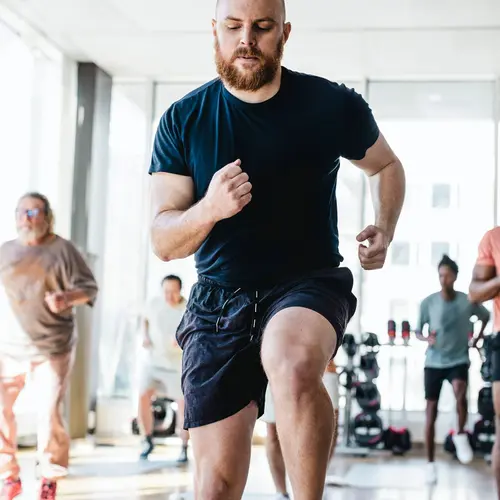Resistance bands are an easy way to introduce yourself to strength training. They are versatile and start at a very low resistance, helping you build your strength. Whether you are recovering from injury or building muscle strength, there are bands for every level of physical strength.
Resistance bands are pieces of rubber that form flat loops or thin tubes with handles on each end. The loop bands are easier to use for total body exercises. These bands are often sold in sets and come in a variety of resistances, which depends on the band’s length and thickness.
Using resistance bands helps you build your muscle strength and lowers your risk of injury. Because these bands are so versatile, you can target any body part you want. They help target weight loss, build leg and core strength, and open up your range of movement to advance to other forms of exercise.
Resistance Bands Exercises to Help Beginners
As a beginner, you should do these resistance bands exercises one or two times with moderate resistance. Then, as you learn proper technique and understanding of the exercise, you can increase resistance. As you get started, you should be very aware of how you’re feeling and be cautious of pushing your body too far.
The benefits of resistance band training include:
- Increase physical strength
- Improve posture
- Increase blood circulation
- Improve balance
- Enhance mental health and boost mood
- Increase bone strength and health
Here are five exercises to start resistance band training:
Band Pull-Apart
This exercise improves posture and helps prevent shoulder tightness.
- Step 1: Hold the band with both hands at chest height in front of you. Hold your hands shoulder-width apart.
- Step 2: Pull your arms apart, stretching the band and squeezing your shoulder blades apart.
- Step 3: Slowly return to the starting position.
Repeat two to three sets, with 10 repetitions each.
Pallof Press
The Pallof press helps relieve back pain and improve core stability.
- Step 1: Securely wrap the band around a doorknob or another immovable object. Make sure the band is close to chest height. Grab the other end of the band with both hands, facing the object.
- Step 2: Walk backward until the band is taut. Turn 90 degrees from the object, so it’s on your side.
- Step 3: Push the band straight in front of you and hold, keeping your body straight. Hold for 15 seconds.
- Step 4: Slowly return to the starting position. Repeat on the other side.
Repeat three times per side.
Leg Press
These exercises will strengthen your leg muscles and target your lower body.
- Step 1: Lie on your back with your knees bent and feet flat on the floor.
- Step 2: Raise your left foot off the floor and bring your knee to your chest. Loop the band around the arch of your foot.
- Step 3: Extend your leg by pressing your foot away and straightening your leg.
- Step 4: Slowly return to the starting position. Repeat on the other side.
Repeat two to three sets per side, with 8 to 10 repetitions each.
Chest Press
This exercise helps strengthen your arms and back, improving posture.
- Step 1: Place the band around your back under your arms. Hold each end with your arms bent, hands by your armpits.
- Step 2: Extend your arms straight in front of you at chest level.
- Step 3: Bend your arms and slowly return to the starting position.
Repeat two to three sets, with 10 repetitions each.
Ab Crunch with Band
This exercise will target your abdominal muscles and upper body.
- Step 1: Loop the band around an immovable object connected to the floor.
- Step 2: Grab each end of the band, lie on your back with your head aligned with the anchor point.
- Step 3: Bend your knees and have your feet flat on the floor. Position your hands above your face.
- Step 4: Tighten your abdominal muscles and lift your upper body, shoulders, and head.
- Step 5: Relax and slowly return to the starting position.
Repeat two to three sets, with 10 repetitions each.
Safety Considerations
The goal of these resistance bands exercises is to improve mobility and strengthen your muscles. If you experience pain while using resistance bands, stop immediately and then ease back into the exercise. If the pain persists, do not push through it.
Make sure you are warming up and taking time to cool down before and after each exercise session. Focus on form, not how much resistance you can handle. Make sure your body is properly aligned and concentrate on the muscle group you are targeting. Pay attention to your breathing, and stop if you feel sharp pain.
Use the resistance bands with care, by making sure the band is secure to your foot or a door before exercising. Overstretched and worn bands are more likely to snap and potentially cause injury.


